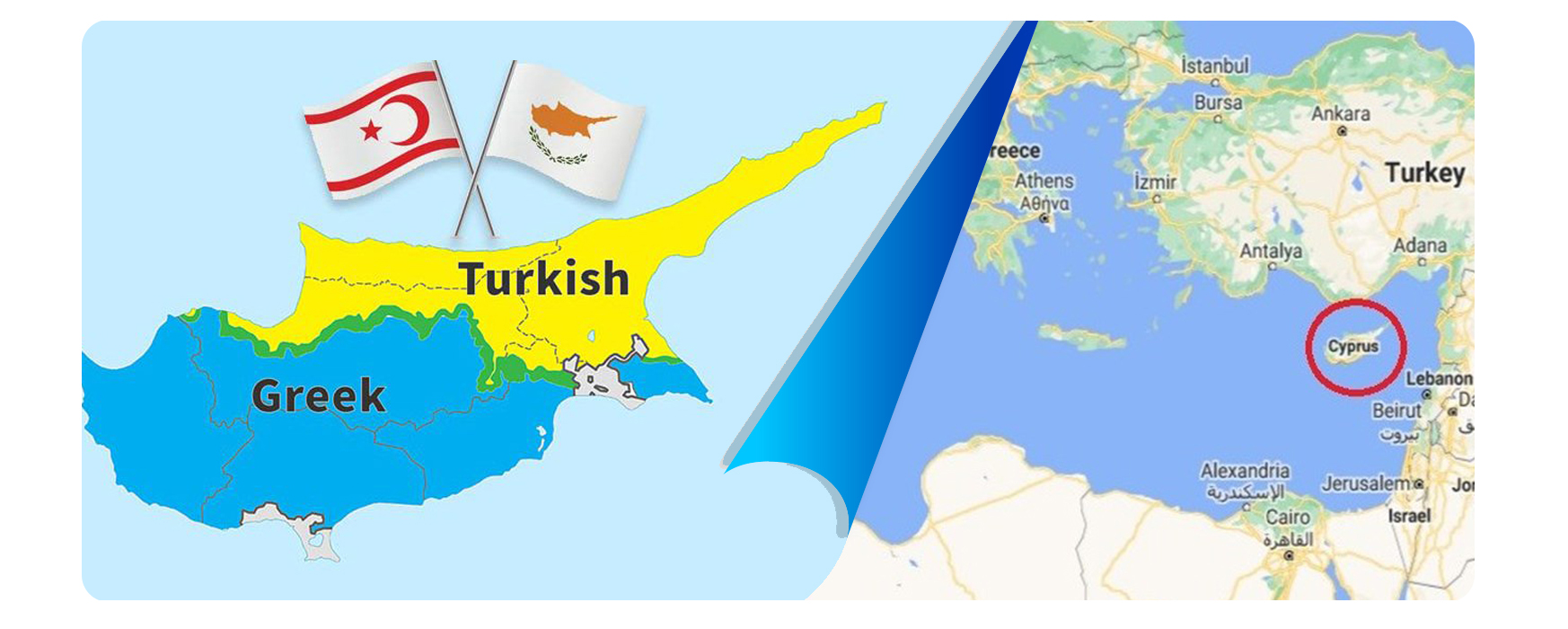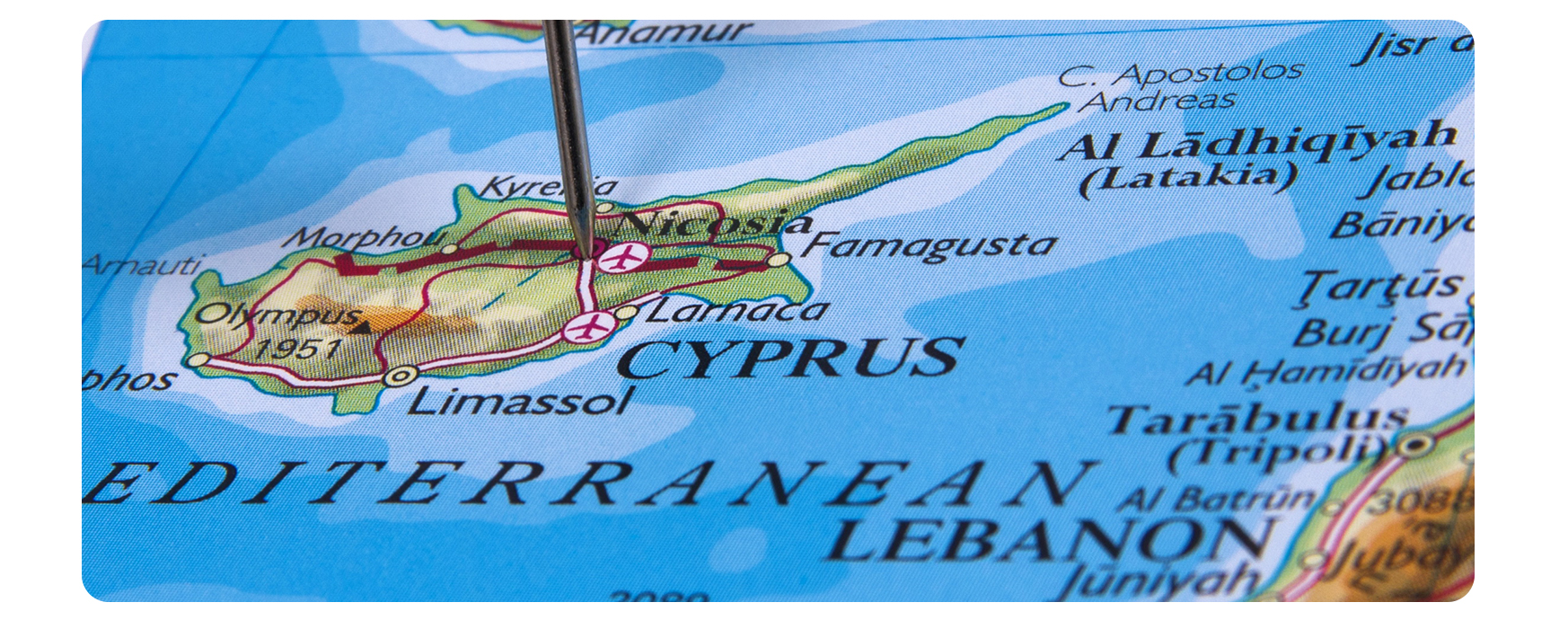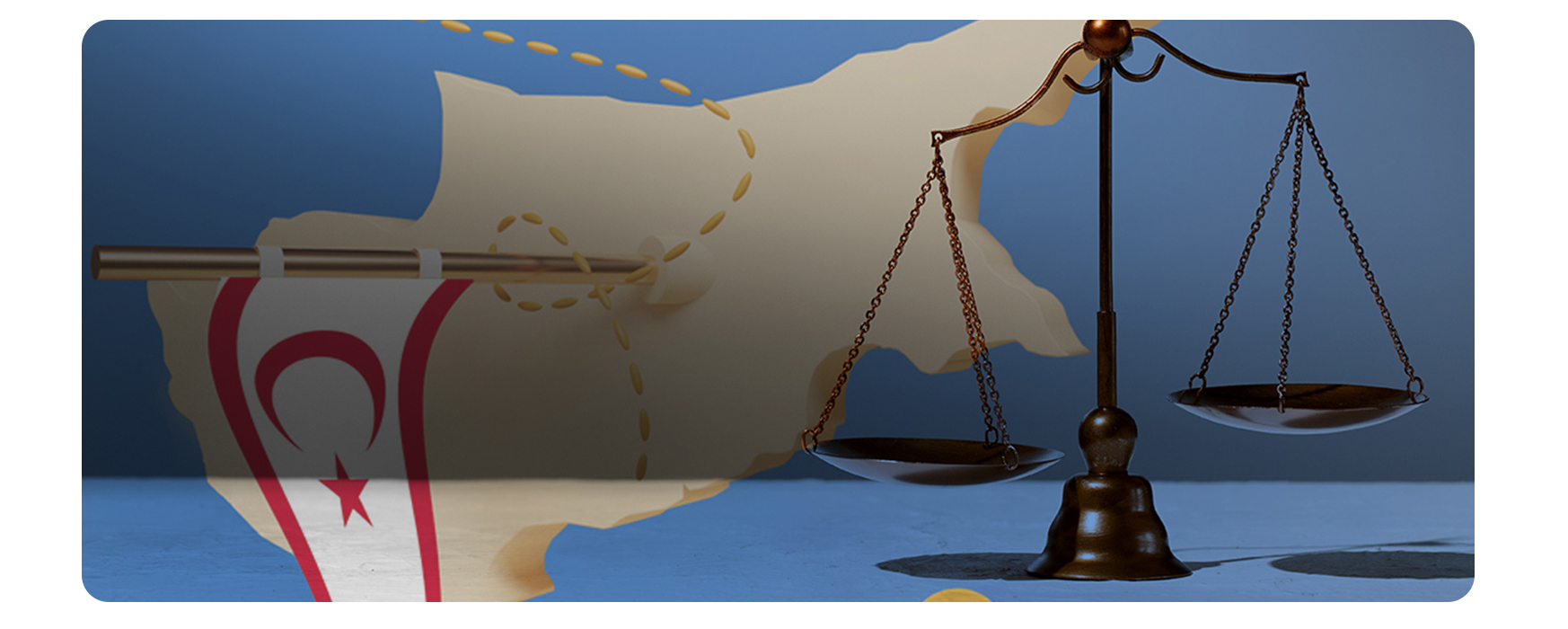
Introduction to Northern Cyprus
Introduction to Northern Cyprus
Northern Cyprus, with its beautiful nature and investment opportunities, has always been recognized as one of the world's attractive regions. Due to its unique political situation, it stands apart from other parts of the world and is mainly known as a tourist destination. However, for those seeking a unique experience of culture, history, and investment, Northern Cyprus is an appealing choice. This blog will explore the details and features of Northern Cyprus, providing comprehensive information for those looking to travel, invest, or migrate to this region.
Where is Northern Cyprus?
Northern Cyprus is the northern part of the island of Cyprus, located in the eastern Mediterranean Sea. Due to ethnic and political conflicts in 1974, the island was divided into two parts, north and south. Northern Cyprus is supported by Turkey and covers an area of approximately 3,500 square kilometers, making up about one-third of the entire island. Geographically, Northern Cyprus is situated between Turkey, Syria, Israel, and Egypt. Its proximity to Iran has also attracted significant attention.

Geographical Location of Northern Cyprus
Northern Cyprus is situated in a strategic area. Located in the eastern Mediterranean near the southern coast of Turkey, Northern Cyprus is about 65 kilometers away from the southern shores of Turkey. This geographical proximity significantly influences the region’s culture, economy, and politics. Northern Cyprus is also close to key Middle Eastern countries like Syria, Lebanon, and Israel, which strengthens its strategic position. The region boasts sandy beaches, lush mountains, and vast plains, making it rich in natural and environmental diversity and a popular tourist destination.
Cities of Northern Cyprus
Northern Cyprus has several important cities, each with its own unique characteristics and attractions:
- Lefkosa (Nicosia): The capital of Northern Cyprus and the largest city in the region. It is the only divided capital in the world, split into northern and southern parts. Nicosia is the economic, cultural, and political center of Northern Cyprus, housing many government institutions and universities.
- Girne (Kyrenia): One of the most beautiful and lush coastal cities in Northern Cyprus, known for its stunning beaches, historical castle, and old harbor. This city is a popular destination for tourists, and many luxury hotels and resorts are located here. Girne is also a key commercial and economic hub in Northern Cyprus.
- Famagusta: A historical city in Northern Cyprus, rich with ancient architecture and numerous archaeological sites. Located on the island’s eastern coast, Famagusta is known for the ancient city of Salamis and the Venetian defensive walls, making it a favorite tourist destination.
- Güzelyurt: A small agricultural town located in the west of Northern Cyprus, famous for its citrus groves and farmlands. It is one of the main agricultural production centers in the region.

A Detailed Introduction to Northern Cyprus
Despite political and economic challenges, Northern Cyprus has maintained its identity and become an attractive destination for tourists and investors. Due to its complex history and cultural diversity, it is one of the most unique regions in the Mediterranean. Close ties with Turkey have influenced many aspects of the economy and society in Northern Cyprus, though the Cypriot identity and culture remain preserved and are evident in the people's daily lives.
Northern Cyprus has a dynamic economy based on agriculture, tourism, education, and services. Tourism is a major source of income, with thousands of visitors from various countries traveling to the region annually. In 2023, more than two million tourists visited Northern Cyprus. In addition, the region is also known as a popular destination for higher education and investment.
Northern Cyprus Key Information Table

Population of Northern Cyprus
The population of Northern Cyprus is approximately 830,000. This population includes a mix of Turkish Cypriots, Turkish immigrants who moved after 1974, and foreign investors and migrants. The population continues to grow due to natural population increases and internal and external migration. The population density is higher in major cities like Lefkosa, Girne, and Famagusta, while rural and peripheral areas have fewer residents.
Culture of Northern Cyprus
The culture of Northern Cyprus is a blend of Turkish, Greek, and Mediterranean influences. Due to its complex history and cultural interactions with neighboring countries, Northern Cyprus has a rich and diverse culture. The music, art, and architecture of the region reflect the various historical and cultural influences that have shaped it over the centuries.
Festivals and local events play an important role in the cultural life of Northern Cyprus. These include religious, cultural, and artistic festivals held throughout the year, featuring music, dance, local cuisine, and performances. Traditional crafts such as weaving, pottery, and tile painting are also part of the region's artistic heritage and have been preserved over time.
The cuisine of Northern Cyprus also reflects this cultural fusion, incorporating elements from different traditions. Mediterranean influences are evident in the use of olive oil, fresh vegetables, and seafood in many Northern Cypriot dishes.

Climate of Northern Cyprus
Northern Cyprus enjoys a Mediterranean climate, with hot, dry summers and mild, rainy winters. Summers in Northern Cyprus can be extremely hot, with temperatures reaching up to 45°C in July and August. During this season, most people prefer spending time at the beach, enjoying water activities.
Winters in Northern Cyprus are mild and rainy, with temperatures usually ranging between 10°C and 15°C. The rainy season brings greenery and beauty to the region. Spring and autumn offer pleasant, moderate weather, making these seasons ideal for visiting the region’s natural and historical attractions.
North Cyprus Cuisine
North Cyprus cuisine is a blend of Mediterranean and Turkish cooking, featuring a variety of delicious meat and seafood dishes. The food in this region is made with fresh, local ingredients and has a unique flavor. Popular dishes in North Cyprus include hummus, baba ghanoush, olives, cheese, and various salads. These are usually served with fresh bread and often act as appetizers on Cypriot tables. Kebab is one of the staple foods in North Cyprus, prepared in several ways. Börek, a type of Turkish pastry, is made with thin dough filled with cheese, meat, or vegetables. It is usually served warm and is a popular snack or main course.

Historical Map of North Cyprus
North Cyprus has a complex and rich history that dates back to various historical eras. From ancient times to different empires, this region has always been influenced by powerful civilizations. The historical map of North Cyprus reflects border changes and geographical divisions that occurred over time due to political transformations in the area. In ancient times, North Cyprus was part of great civilizations like Greece and Rome. It later came under the influence of the Byzantine Empire and then the Ottoman Empire. During the Middle Ages and the modern era, North Cyprus was recognized for its strategic position, serving as an important point for trade and military purposes. The division of Cyprus into the northern and southern sections in 1974 is one of the most significant historical events in this region. This division resulted from ethnic and political conflicts between Turks and Greeks, leading to the formation of the Turkish Republic of Northern Cyprus.
Capital of North Cyprus
The capital of North Cyprus is Lefkoşa, also known as Nicosia. It serves as the administrative center of North Cyprus and is the only capital in the world divided into two sections. Lefkoşa is located in the center of the island and has a long history dating back to ancient times. The city features a mix of old and modern architecture, where signs of different cultures and civilizations can be observed. Historical neighborhoods with narrow streets and stone houses stand alongside modern shopping centers and government buildings. Lefkoşa is home to old castles, museums, and historic mosques, which are attractive to those interested in history and culture.
Population Statistics of North Cyprus
The population of North Cyprus is around 830,000, reflecting the region's diverse demographic makeup. The majority are Turkish Cypriots, along with Turkish migrants and foreign residents.
Tourist Attractions in North Cyprus
North Cyprus boasts a variety of tourist attractions, from beautiful beaches to historical sites and pristine nature, offering something for every taste. Some of the notable tourist destinations include:
- Kyrenia Castle: One of the most famous historical landmarks in North Cyprus, located in the city of Kyrenia. The castle dates back to the Byzantine era and has been under the control of various powers throughout history. From the top of the castle, visitors can enjoy stunning views of the Mediterranean Sea and Kyrenia harbor.
- Ancient City of Salamis: A major archaeological site near Famagusta, Salamis was one of the largest and most prosperous cities in ancient Cyprus. The site features many ancient ruins, including a theater, temples, and public baths.
- Selimiye Mosque: Located in Lefkoşa, this mosque is one of the most important religious and historical buildings in North Cyprus. Originally the Hagia Sophia Cathedral, it was converted into a mosque during the Ottoman period. The architecture is a blend of Gothic and Islamic styles, making it one of the symbolic landmarks of Lefkoşa.

Scenic Attractions in North Cyprus
In addition to historical and natural landmarks, North Cyprus offers a range of scenic attractions that provide unforgettable experiences for tourists. Some of these include:
- Karpaz National Park: One of the most beautiful natural areas in North Cyprus, located on the Karpaz Peninsula. The park features untouched beaches, lush forests, and diverse wildlife.
- Bellapais Abbey: A stunning historical abbey near Kyrenia, dating back to the Middle Ages. It boasts beautiful Gothic architecture and offers breathtaking views of the mountains and sea.
Flag of North Cyprus
The flag of North Cyprus symbolizes the national and political identity of the region. It features two horizontal red stripes at the top and bottom, with a red star and crescent in the center of the white flag. The design is similar to the Turkish flag, reflecting the close ties and support between Turkey and North Cyprus. This flag was officially adopted in 1984 after the region declared its independence and has since been recognized as the official flag of the Turkish Republic of Northern Cyprus.
Laws in North Cyprus
The laws in North Cyprus are a mix of traditional and modern regulations, with many being derived from British law. Some important laws and regulations in North Cyprus include:
- Entry into North Cyprus is visa-free for citizens of some countries, but long-term residency requires appropriate permits. The regulations vary for migrants and tourists depending on nationality.
- There are specific laws regarding land and property ownership in North Cyprus. Some lands are government-owned, and their purchase and sale are subject to certain restrictions due to the region’s unique political situation and historical divisions.
- Driving in North Cyprus follows the left-hand side of the road, which may be unfamiliar to many tourists. The traffic rules are similar to those in the United Kingdom, and violations are met with heavy fines.

Official Language of North Cyprus
The official language of North Cyprus is Turkish, which is used in administrative, educational, and media affairs. However, due to the region’s history and international interactions, many people in North Cyprus can speak English. English is widely used as a second language in business and tourism contexts.
Best Time to Visit Northern Cyprus
The best time to visit Northern Cyprus depends on the activities you plan to do. If you want to enjoy the beaches and warm weather, the summer months (June to September) are ideal. During this time, the weather is hot, and the bright Mediterranean sun offers a perfect opportunity for swimming and water activities.
For those interested in sightseeing and exploring historical attractions, spring (March to May) and fall (late September to November) are the best times. During these seasons, the weather is milder, and there are fewer tourists, allowing for a more peaceful and comfortable experience.
Winter (December to February) is also a good time to visit if you enjoy cool, rainy weather. During this season, Northern Cyprus' natural landscapes become greener, and prices are generally lower compared to the summer months.
What is the Currency of Northern Cyprus?
The official currency of Northern Cyprus is the Turkish Lira (TRY), used for daily purchases and financial services. However, in real estate and car transactions, other currencies such as the British Pound, Euro, and US Dollar are also commonly used.
Time Difference Between Iran and Northern Cyprus
The time difference between Iran and Northern Cyprus is half an hour, with Northern Cyprus being 30 minutes behind Iran.

Distance Between Northern Cyprus and Iran
The direct distance between Northern Cyprus and Iran is approximately 1,670 kilometers, although this may vary depending on the exact departure and arrival points. A direct flight usually takes about 3.5 hours.
Why Choose Northern Cyprus?
Northern Cyprus attracts tourists, migrants, and investors for a number of reasons. Here are a few key reasons to choose Northern Cyprus:
• Affordable prices: The cost of living and travel in Northern Cyprus is cheaper compared to many European countries and even neighboring countries like Turkey.
• Economy and Cost of Living: Northern Cyprus has a stable and growing economy, offering many opportunities for business and investment. This makes it an attractive destination for those seeking travel or residency.
• Low crime rate: Northern Cyprus is one of the safest areas in the Mediterranean, with a very low crime rate, making it a safe place for living and traveling.
• Visa-free entry: Entry to Northern Cyprus is visa-free for citizens of many countries, making it easier for tourists and international businesses to visit.
• International support: Northern Cyprus is supported by Turkey and Turkish states.
• Promising future: Thanks to its strategic location and international backing, Northern Cyprus has a promising future. Investments in sectors such as tourism, education, and real estate show clear signs of future growth.
• Forward-thinking government policies: Northern Cyprus' government policies are based on sustainable development and attracting foreign investments, making it a desirable location for investors.
• Ideal climate and unspoiled nature: The Mediterranean climate and pristine nature of Northern Cyprus make it an ideal place to live and relax. Beautiful beaches, green mountains, and national parks are among the region's natural attractions.
• Rapid growth in the tourism industry: Northern Cyprus' tourism industry is growing quickly, attracting more international tourists each year. The development of tourism infrastructure, along with more hotels and accommodations, reflects the sustainable growth of this sector.
• High real estate market growth: The real estate market in Northern Cyprus is experiencing significant growth. Reasonable prices and numerous investment opportunities make the area a popular destination for buying property and real estate investment.
Disadvantages of Northern Cyprus
Despite its many advantages, Northern Cyprus faces some challenges that should be considered:
• Due to its lack of international recognition, Northern Cyprus may face limitations in accessing global markets and international trade.
• Because of its political situation, Northern Cyprus lacks international infrastructure, such as widespread transportation networks.
• Some laws and regulations in Northern Cyprus may be restrictive for foreigners and international investors. For example, land and property ownership laws may be complex and confusing.

Political Developments in Northern Cyprus
Political developments in Northern Cyprus are influenced by the ethnic and historical conflicts between Turks and Greeks. The region recently celebrated the 50th anniversary of its independence, and its status is a topic of international discussion.
Countries with Agreements with Northern Cyprus
Only Turkey officially recognizes Northern Cyprus and maintains close diplomatic and trade relations with the region. However, Northern Cyprus seeks to expand its relations with other countries and strengthen international cooperation. With a Northern Cyprus passport, you can travel visa-free to countries like the USA, UK, France, Australia, Poland, and more.
Methods of Immigration to Northern Cyprus
Immigrating to Northern Cyprus is possible through various avenues such as investment in property, starting a business, studying, and employment. Each of these methods requires specific conditions and documentation, which applicants must prepare and submit.
Northern Cyprus Island Airport
Ercan Airport is the international airport of Northern Cyprus, located in Nicosia (Lefkoşa).

How to Obtain a Northern Cyprus Visa
Citizens of many countries do not need a visa to enter Northern Cyprus and are granted a 30-day tourist visa upon arrival at the airport. Other methods to obtain a visa include purchasing property, registering a business, or enrolling in a university.
Transportation in Northern Cyprus
The public transportation system in Northern Cyprus includes buses and taxis. Additionally, car rentals are a popular option for tourists who want to explore the area freely.
Souvenirs from Northern Cyprus
Northern Cyprus offers a variety of souvenirs, including handicrafts, knitted fabrics, pottery, and local food products.
Frequently Asked Questions
Which continent is Northern Cyprus in?
Northern Cyprus is located in Europe, although it is not a part of the European Union.
Does Northern Cyprus require a visa?
Many countries’ citizens do not need a visa to enter Northern Cyprus, but a special visa is required for longer stays or specific purposes.
How can I travel to Northern Cyprus?
You can travel to Northern Cyprus by air to Ercan Airport or by sea via ferry.
Is it better to visit Northern Cyprus or Southern Cyprus?
Choosing between Northern and Southern Cyprus depends on individual preferences and travel goals. Northern Cyprus is known for its lower costs and untouched nature, while Southern Cyprus has more developed infrastructure.
How far is Northern Cyprus from Turkey?
Northern Cyprus is just 65 kilometers from Turkey’s southern coast, with regular sea and air routes between the two regions.
Do I need a visa to visit this beautiful island?
In most cases, a visa is not required to enter Northern Cyprus, and a 30-day tourist visa is issued upon arrival at the airport. However, this depends on your nationality and the length of your stay.